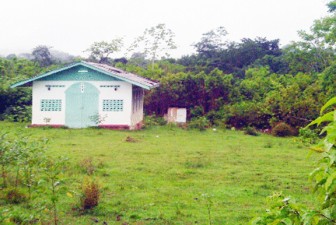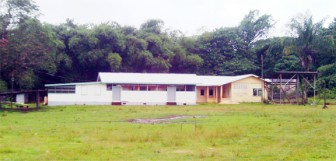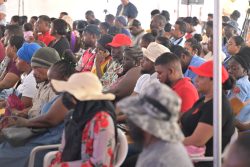“I came here about five years ago from West Berbice but I find it ok here because it peaceful,” said Roy Shivdat, one of the less than 200 residents who live in the Region One mining community of Arakaka.
The settlement is located along the left bank of the Barima River, and is mainly accessed via a diversion from the main roadway which connects the more populated Matthew’s Ridge and Port Kaituma communities. It is a thirty to forty-five minute drive from the main roadway into the area.
Arakaka begins at the “Four mile stretch” where a number of small miners’ camps are visible along the side of the road. The sounds of the land dredges can be heard miles away, and as one enters Arakaka, small shops, some of which house the well-known ‘kayamoos’ can be found along the roadway.
While most persons live at the end of the roadway where it meets the Barima River, there are some who live at “Four mile stretch” because their mining operations are centered there.
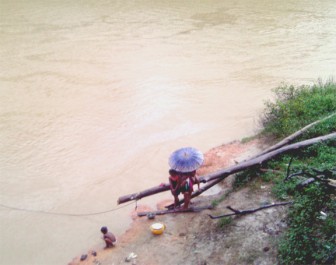
on the banks of the Barima River near Arakaka.
According to a prominent resident, the community’s population was more than a 1000 in the 1990s, and in years gone by, dozens of people flocked there in search of gold. In those days, there were only a few facilities compared to what is available today. He said that as time went by, people left the area as the prospects for gold appeared better in other parts of the North West District and around the country.
He said that the families who have remained at Arakaka are the “diehards” who have made it home, and while life in the area can be difficult, most have adapted to the lifestyle.
He said that since there are limited job opportunities available, most households are engaged either in mining or in the trading of goods including food, cutlery, clothing and electrical appliances. “The spin-offs are great for the ordinary family who go to Arakaka in search of that value that gold has to offer,” the man said.
According to Shivdat, life in the area is quiet, and while everyone knows one another, there is hardly communication between households since residents “have their own business to do on a daily basis.” He said that this was one area which he believed needed to be addressed by residents: “People here keep to themselves, and it’s not a matter of who has more than who, but for me it’s important for people to cooperate man, and that is what we need here in Arakaka.”

Having returned to the mining community minutes before speaking to this newspaper, he said that most people travel out of the area by road, even though the Barima River flows past the settlement close to the shop which Shivdat operates. He said that people prefer to use the road since it is cheaper and less fatiguing.
He explained that most persons carry out their business transactions at Port Kaituma or Matthew’s Ridge while some do what is called a “double charter” in which goods are bought on the coastland and then shipped to the area.
The latter he noted, involves the purchasing of goods in large quantities on the coast, shipping them into Port Kaituma by barge or the North West ferry the MV Lady Northcote and then into Arakaka by truck. He said that businesses would experience losses along the way, and in some instances the goods were damaged in transit or persons would help themselves.
Shivdat said that moving goods into Arakaka comes with a hefty price, although hired vehicles go into the area almost daily. The cost of hiring a four-wheel drive pick-up truck to transport goods is almost $200 000, he said, while in the case of a truck the cost may double. In addition, the price may rise if the roads are deteriorating. Transportation services are always available at Port Kaituma and Matthew’s Ridge, Shivdat said.
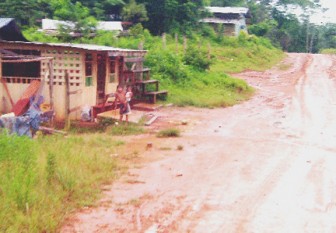
Arakaka resident Selman Hopkinson told Stabroek News that he has been living in the mining community for more than two decades. The small miner noted that there are issues affecting small miners and that there had been a move some time ago to form a small miners association, which would have addressed problems faced by the community, critical social issues and other matters affecting the lives of residents. But according to him, those who were willing to form the body were “intimidated” by the persons who held the leases to the lands on which the small miners worked, and this resulted in the group’s plans falling apart.
He said that the education system in Arakaka needed to be addressed, including the upgrading of the school, while a shortage of teachers was another problem faced by the school population there.
Hopkinson went on to say, “There is nothing for the youths in the area in terms of sports,” and this too was something which needed urgent attention. “Life in Arakaka … we won’t say it expensive but you got to cater for transportation etc,” he added.
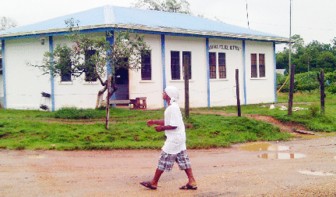
There is a hospital at Arakaka with several amenities, and a health worker is always on call. The medical facility also houses a malaria unit and according to a health worker there, that area records the highest number of malaria cases in the region on a monthly basis. She said that during the rainy season the incidence of the disease is high, and most persons do not even know they have contracted the disease. Much of the testing is carried out in the mining areas where the disease is expected to be prevalent.
There is a primary and a nursery school at Arakaka; however, when students complete their primary education, they have to move to Port Kaituma or Matthew’s Ridge in order to attend a secondary school. A police station which enjoys a picturesque outlook and is sited at the centre of the community greets any first time visitor to the area.
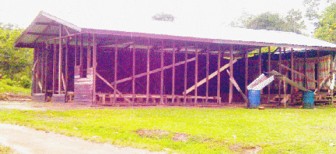
According to residents, city-based politicians rarely visit Arakaka, although there are some based in the region who would come.
There is no airstrip at Arakaka but one resident was of the view that the authorities should consider putting one there since it is difficult to find transportation out of the area, especially at night and during the rainy season.
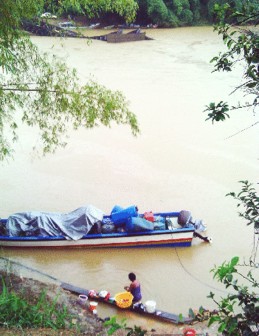
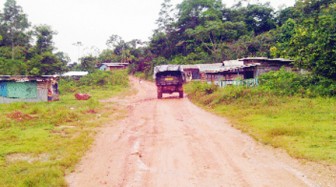
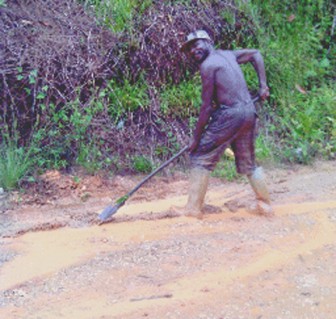
Sub-Region in Region One.


